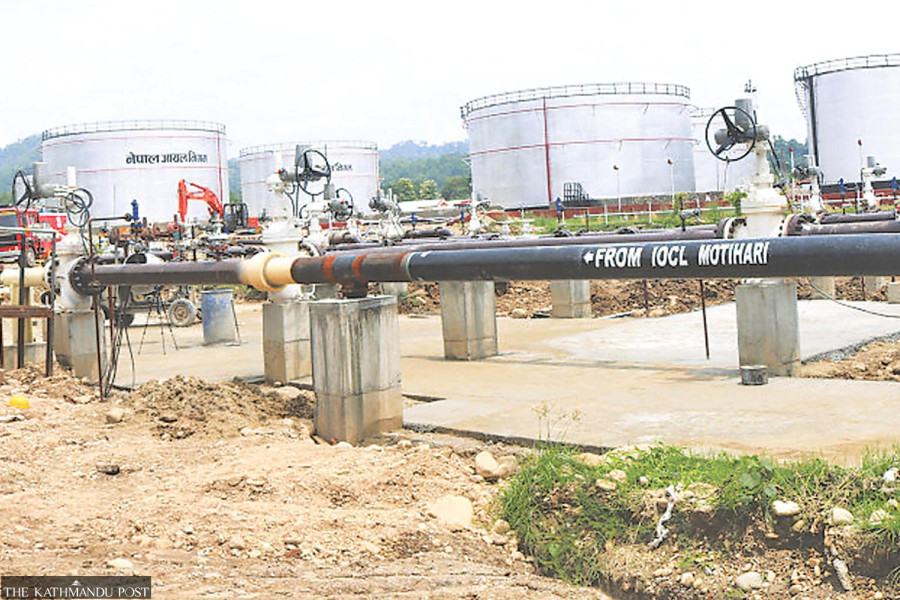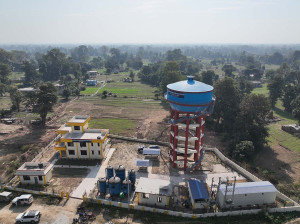Money
Nepal undermining hydropower as it seeks to ease fuel imports, experts say
There is an immediate need to run the transport sector on clean energy, as most countries are already doing.
Krishana Prasain
Nepal is all confused about its energy policy, insiders say.
One group of experts is arguing whether to build an oil pipeline or promote electric vehicles. Another group is discussing the pros and cons of laying a gas pipeline and making greater use of surplus electricity.
Environment groups have been lobbying the government to build charging stations for electric vehicles across the country. But the bureaucracy and oil utility want to build a multi-billion-rupee pipeline to transport liquefied petroleum gas.
The state-owned Nepal Electricity Authority says it can reduce Nepal’s dependence on cooking gas and allow it to slash imports by supplying cheaper power.
On Tuesday, the Nepal-India Joint Working Group on Petroleum and Gas met in Kathmandu and decided to conduct a study for the construction of a gas pipeline from Motihari, India to Amlekhgunj, Nepal.
Another proposed gas pipeline will extend from Gorakhpur, India to Bhairahawa. Officials also discussed building a second oil pipeline from Siliguri, India to Charali in Jhapa.
The Joint Working Group was co-chaired by Radhika Aryal, joint-secretary at the Ministry of Industry, Commerce and Supplies, and Esha Shrivastava, joint-secretary of India’s Ministry of Petroleum and Natural Gas.
Urmila KC, an under-secretary at the industry ministry, says building these infrastructures is at the top of the agenda. “Funding for these projects, which include building fuel storage tanks, will be discussed at the next high-level meeting.”
But experts say these billion-dollar projects are a waste of money. According to them, there is an immediate need to decarbonise the transport sector, and most countries, including Nepal’s two immediate neighbours, are already moving in that direction.
But Nepal is going backwards, they say.
Kul Man Ghising, managing director of the Electricity Authority, said both the government and the power utility have a policy to replace cooking gas with hydroelectricity.
“If the government plans to invest in fossil fuels and cooking gas despite surplus electricity, it’s a flawed policy,” he said.
Petroleum products are Nepal’s largest import, accounting for 17.4 percent of its total import bill. Motor vehicles which burn fossil fuels and their spare parts come second, accounting for 6.5 percent of total imports.
According to the Department of Customs, Nepal’s import of petroleum products soared by 79 percent to Rs383.92 in the fiscal year 2021-22 compared to fiscal 2020-21.
The import of cooking gas jumped by 81.31 percent year-on-year to Rs65.55 billion in the last fiscal year.
Nepal imported 535,865 tonnes of cooking gas last year compared to 477,422 tonnes the previous fiscal year.
Nepal imported vehicles and spare parts worth Rs123.91 billion last fiscal year.
“Obviously, it will take some time for us to improve the infrastructure to ensure uninterrupted power supply, but it’s totally against our policy to import cooking gas and petroleum products knowing that we will have surplus electricity in the near future,” said Ghising.
“The government should be serious about reducing the trade deficit by exporting electricity and stopping imports of petroleum products,” he said. “Electrification of every home in every remote part of the country is necessary.”
Last August, the Nepal Electricity Authority revealed a plan to achieve 100 percent access to electricity within 2024, well ahead of the target year of 2030 set by Sustainable Development Goal 7.
Goal 7 is one of 17 SDGs set by the United Nations General Assembly in 2015. It aims to "ensure access to affordable, reliable, sustainable and modern energy for all”.
Electricity access had reached 92.52 percent of the population as of the fiscal year ended in mid-July.
In the last fiscal year, 735 megawatts of electricity, including that from solar plants, was added to the national grid.
With the addition, the installed capacity of electricity increased to 2,189.6 megawatts in 2021-22, which consists of 2,075.4 megawatts of hydroelectricity, 54.8 megawatts of solar power, 6.0 megawatts from cogeneration and 53.4 megawatts put out by thermal plants.
Ghising said the trade deficit had ballooned mainly due to a rise in the import of petroleum products.
According to energy expert Amrit Nakarmi, Nepal’s prime minister has promised to adopt green energy and reduce the dependency on fossil fuels at different international forums.
“But the government is doing just the opposite. This shows that it lacks long-term vision and is abandoning the commitments made at the international forums.”
Nepal has proposed to switch from gasoline-powered automobiles to electric vehicles by 2031, and pursuant to this policy, the 2020-21 budget unveiled by the then KP Sharma Oli administration contained a strategic plan to lower oil imports, and with it, the resulting air pollution.
On November 1, 2021, speaking at the World Leaders Summit of the 26th Conference of Parties to the United Nations Framework Convention on Climate Change (COP26) in Glasgow, Scotland, then-prime minister Sher Bahadur Deuba announced that Nepal aimed to reach net zero emission by 2045.
“India is looking to expand its fuel market, but it is a loss for Nepal if it plans to build the pipelines. The government needs to think about these issues seriously,” said Nakarmi, who is the coordinator of the Energy Systems Planning and Analysis Unit at the Centre for Energy Studies, Institute of Engineering.
“We have become self-sufficient in electricity generation. Why be dependent on natural gas again like we are on petroleum currently?” Nakarmi said. “The investment in the import of fuel will be a waste. Instead, the government should invest in increasing the reliability and quality of electricity and invest in infrastructure for electric vehicles.”
Full dependency is bad, experts say. In 2015, a fuel crisis created by India's unofficial blockade launched a discourse on Nepal’s energy security.
As Nepal is completely dependent on India for petroleum products, a halt to fuel shipments led to an acute shortage, forcing the government to ration fossil fuels, implement an odd-even system for vehicular movement, and stop selling gasoline for private automobiles altogether for months.
In 1989, India, which surrounds Nepal on the east, west and south, imposed an embargo against its small neighbour for a year and a half. Being a landlocked country, Nepal’s options are limited with regard to its fuel needs and has a hard time when its sole supplier turns off the supply.
But the energy scenario is changing. Nepal has started exporting electricity, transmitting Rs11 billion worth of electricity in the last fiscal year, and making it the third largest export.
“We have been working on improving the reliability of infrastructure and quality. An investment of more than Rs500 billion is required for transmission lines and more than Rs400 billion for distribution and construction of substations,” said Ghising.
“The investment would have been recovered if the price of electricity had not been reduced,” he added. “But the government may want to have multiple options, so it might be looking to expand the supply of natural gas, he said.
Experts say electricity is cheaper compared to oil, which keeps becoming more expensive due to global demand and geopolitical tensions.
“Cooking with electricity is 50 percent cheaper than using liquefied petroleum gas,” said Nakarmi.




 20.12°C Kathmandu
20.12°C Kathmandu













